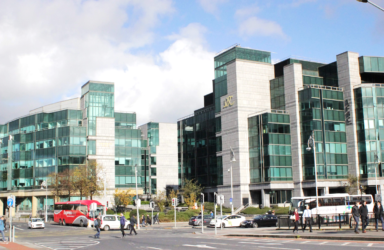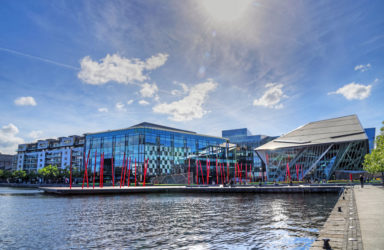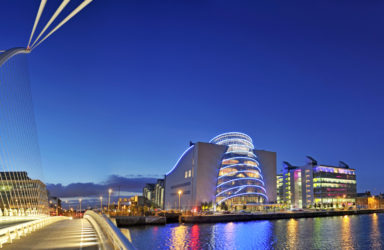Spire Capital Expert Insight
Spire Capitals Blog focuses on providing information to investors about the best performing areas in Dublin, market news, the Dublin property market and Spire Capitals activates


Is Stoneybatter really the coolest neighbourhood in Ireland?
Is Stoneybatter really the coolest neighbourhood in Ireland? Smithfield Square & Stoneybatter is a an up-and-coming traditional area bursting with culture receiving big investment on Dublin’s northside . Right on the luas line, these areas boast high-end apartments as well as commercial property. Smithfield Square is a community at the heart of Dublin 7. Come for the culture, stay for the night life. With Dublin city centre on its door step, Smithfield is the perfect place to live, work, wine, dine and be entertained. The Light house Cinema and, the newly renovated Jameson distillery and the Museum of Decorative Arts and History in Collins Barracks are just a few of the amenities located in Smithfield with a plethora of cafes, bars and restaurants. Until a few years ago, Dublin’s working-class neighbourhood of Stoneybatter and its environs, just north of the river Liffey, were run-down and little talked about. Following a surge of ambivalently received gentrification, Stoneybatter has become synonymous with Dublin hipsterism. Mountain beards and craft beers are de rigueur, and you needn’t look hard to find “hot yoga” venues, art spaces and community squats. "Stoneybatter named one of the 'coolest neighbourhoods in the world’ by Time Out magazine" RENTAL FACTS Highly sought-after location with legal professionals for being the central legal hub of Ireland: The Law Society of Ireland, The Bar Council of Ireland, The Four Courts and Criminal Courts of Justice Stoneybatter named in Top 50 ”Coolest” places globally Excellent transport facilities with the LUAS red line and Dublin Bikes station on the square An abundance of amenities on the doorstep such as Jervis Shopping Center and Henry Street If you are thinking of investing in property as a source of alternative income, why not contact us today to discuss your requirements in more detail? Phone: +353 86 325 0048 I Email: info@spirecapital.ieAuthor: Colin O'ReganRead Time: 4 minsConor Fitzpatrick

Dublin Financial Services District – home to Irelands Top Finance Professionals
Dublin Financial Services District – home to Irelands Top Finance Professionals The Financial Services Centre is the key hub for finance companies “passporting” their products into Europe,The importance of the International Financial Services Centre IFSC) to the Irish economy is indisputable. It has become one of the leading hedge fund service centres in Europe, and many of the world's most important financial institutions have a presence here. Half of the world's top 50 banks and half of the top 20 insurance companies including Merrill Lynch, Sumitomo Bank, Citibank, AIG, JP Morgan, Commerzbank, BNP Paribas, EMRO and KPMG are just some of the big-name operations that have chosen to locate in the IFSC. The IFSC is located along the north bank of the river Liffey and spans over a 37.8-hectare area. The IFSC was cleverly developed with a mix of office, residential and leisure buildings. The neighbourhood enjoys an abundance of social and recreational amenities, from water sports and terraced cafés to elegant wine bars and theatre and musical performances in the Three Arena. RENTAL FACTS Brexit financial services companies and workers moving to IFSC Huge undersupply of rental units Rent increasing faster than normal Lowest 2-bed monthly rents €2,100 Lots of bars, restaurants & cultural amenities No new residential developments If you are thinking of investing in property as a source of alternative income, why not contact us today to discuss your requirements in more detail? Phone: +353 86 325 0048 I Email: info@spirecapital.ieAuthor: Conor FitzpatrickRead Time: 3 minsConor Fitzpatrick

Why is Dublin’s ‘Silicon Docks’ a desirable investment district for overseas property investors?
Why is Dublin's ‘Silicon Docks’ a desirable investment district for overseas property investors? The nickname of the “Silicon Docks” in Dublin has been officially recognised to describe the area where the world’s biggest technology companies have chosen as their European HQ. Facebook, Google, LinkedIn, Salesforce, Airbnb, Amazon, Indeed, TripAdvisor, Accenture, Twitter, Stripe are just some of the growing list of companies that have set up in Dublin, primarily in the Silicon Docks area. With an area workforce expanding day-by-day, global and local workers have been attracted to this area to fill these highly paid roles, with stories of some of them staying temporarily in hotels during the week, such is the shortage of rental accommodation in this area. Many of the workers want to live in the area, not just because it is close to their work but it is also a very desirable place to live with may top end restaurants, bars and cultural events that are staged in the Bord Gais Energy Theatre. RENTAL FACTS Massive undersupply of rental units Rent increasing faster than averages High earning tenants Lowest 2-bed monthly rents €2,500 Lots of bars, restaurants & cultural amenities Continuing MNC office growth in 2020 onwards Limited residential developments Highly sought-after location to work and live If you are thinking of investing in property as a source of alternative income, why not contact us today to discuss your requirements in more detail? Phone: +353 86 325 0048 I Email: info@spirecapital.ieAuthor: Conor FitzpatrickRead Time: 3 minsConor Fitzpatrick

Dublin – one of the best kept property secrets in Europe
Dublin – one of the best kept property secrets in Europe Rents keep rising as scarcity of properties to rent persists A massive surge in home-building is needed to stem the relentless rise in rents, latest rental market analysis shows. The report says 500 new rental properties need to be built every single week for the next three years in Dublin alone — a total of 80,000 over the period. Report author Ronan Lyons says the solution is to encourage private developers to build and institutional investors to become landlords.That conflicts with the view of many housing rights advocates that the bulk of new homes should be provided by the State through social housing programmes and by non-profit bodies. Whatever the solution, the problem is clear — there are too few rental properties available to meet the demand and rents are rising far in excess of general inflation, further limiting the choices of hard-pressed renters. According to the report, from property website Daft.ie, the average monthly rent being paid nationally is now €1,366 but there is huge variation within that figure as it covers both rural and urban addresses and properties of all sizes. A family needing to rent a three-bedroom house faces an array of different rents depending on where they need to live. Dublin will present them with the greatest challenge as homes in that category range in cost from €1,671-€2,210 per month in the county areas and €1,780-€2,623 within the city boundary. Ireland offers best yield in Europe for buy-to-let landlords For the third year in a row Ireland has been named the most attractive destination for Europe’s buy-to-let investors. Reasonable property prices, a stable economy and consistent rental demand all add up to make Ireland a very tempting proposition for buy-to-let investors. According to the third annual European Buy-To-Let League Table from WorldFirst, an international payments expert, Ireland is the best destination in Europe for landlords. Ireland offers an average yield of 7.69%, making it very appealing for investors hoping to maximise rental returns. Hot on its heels is Cyprus, up from 9th place last year to the second slot this time around, while right at the bottom of the table is France, which knocked Sweden off the least-coveted spot. Ireland’s success is also no doubt helped by the fact that property prices are currently soaring across much of Western Europe. Jeremy Thomson-Cook, chief economist at WorldFirst, says: “Part of the reason for Ireland’s buy-to-let success is while average house prices across the country are on the rise, they still sit some way below the country’s 2008 peak. What’s more, only Malta, Luxembourg and Sweden have experienced higher population growth than Ireland meaning that rental demand continues to go from strength to strength. Add these two factors together and you have a compelling overall proposition for buy-to-let investors”.Author: Conor FitzpatrickRead Time: 5 minsConor Fitzpatrick

What to expect from the Dublin Property market – Interview with Colin O’Regan, Head of Asset Management
What to expect from the Dublin Property market – Interview with Colin O’Regan, Head of Asset Management Why is Dublin witnessing a large increase in investment in the Private Rented Sector? When you combine high rents with low purchase prices, the ideal conditions are created for investing in property. In Dublin today, you can achieve the highest yield compared to all the other major cities in Europe with the security of knowing that you are investing in an expanding market that will continue to see an increase rents and prices. What is the typical price of a 2 bedroom apartment in Dublin city centre and how much could it rent for? Like any major capital city, the price of a property varies according to its quality, size, potential and location. In Dublin city centre, the average price of a 2-bedroom apartment is nearly €330,000 according to the latest data from the Property Price Register. As there is a huge undersupply of all housing in Dublin, especially city centre apartments, it would be possible to achieve rent of at least €2,000 per month with growth over time. This means investors could get an average initial rent of nearly 7% in a major European capital city. Which are the best areas in Dublin city to invest in for income? Location, location, location! Spire Capital has identified three expanding areas in the city centre that are delivering the best income returns. These are: Silicon Docks (Hi-Tech Quarter) IFSC (Finance and Banking Quarter) Smithfield and Stoneybatter (Legal Quater) What are the main factors increasing rental income each year? Whilst there are many factors affecting rental income the two most important in any functioning property market are Supply and Demand. Following the global financial crisis, the number of new properties added to the Irish housing stock reduced by over 90%. This means that today we do not have enough units to meeting natural demand. Ireland remains one of the few developed countries with a growing indigenous population. When added to this is the large influx of international workers, and their families, needed for the expanding hi-tech and financial services sectors, this has created more and more demand. As a result of this chronic under-supply and massive over-demand, rents will continue to increase in Dublin city centre. Recent data shows that over 60% of under 35’s are now renting in Dublin. Why has there has been a move away from home ownership to the Private Rental Sector? Traditionally Irish people rented an apartment in the city then saved up to buy a house in the suburbs. Due to high rents it is not possible to rent and save even if they are highly paid. As a result people have decided to rent in high quality city centre locations close to their workplace. How does Dublin compare with other European capital cities regarding PRS market fundamentals? There is no doubt that Dublin is expanding economically resulting in a steep increase in rents. However, the rate of increase of property prices is relatively slower. When compared to other European major capital cities, Dublin is in the top 5 of rental costs but is the lowest to buy. This makes it the best PRS market in all major European capital cities. Apartment prices in Dublin have almost doubled since the bottom of the market in 2012. Is this trend expected to continue for the next 5 years? Due to the low number of apartments being built in Dublin city centre, the trend for increasing prices is set to continue for the foreseeable future, especially from investors looking for income as a result of high rents. Are apartments typically rented furnished or unfurnished? When renting an apartment in Dublin city centre, the apartment is usually rented by the landlord complete with good quality furnishing, in line with market expectations. What is the average time it takes to rent an apartment in Dublin city? When a tenant cancels a rental contract, they must provide the landlord with a minimum notice period. This means that the unit can then be re-advertised for a new tenant with a move-in date to coincide with the departure of the existing tenant. Due to the huge built-up demand, the time to rent is measured in days not weeks or months. What asset management services does Spire Capital provide for foreign investors? Providing international investors with complete Entry-to-Exit asset management services is the cornerstone of our successful business. This leaves the investors in control whilst we maximise their investment return. A important part of our asset management service is tax optimisation, which has always been a very important topic with our existing international investors. Working closely with expert Irish international tax consultants, Spire Capital can ensure that a tailored Irish tax structure is used to reduce Irish tax leakage. If you are thinking of investing in property as a source of alternative income, why not contact us today to discuss your requirements in more detail? Phone: +353 86 325 0048 I Email: info@spirecapital.ieAuthor: Colin O'ReganRead Time: 5 minsConor Fitzpatrick

Coronavirus uncertainty brings new opportunities due to the resilience of the Dublin Property Market
Coronavirus uncertainty brings new opportunities due to the resilience of the Dublin Property Market It is widely acknowledged that the negative economic impact of the COVID-19 pandemic will hit every major country’s economy and Ireland is no different. Over the last fifty years, due to Ireland’s educated, English speaking work-force and international investor friendliness, Ireland has seen huge inward investment from global hi-tech, finance and pharma giants resulting in Ireland having one highest GDP growth over the last ten years. One key sector which has established Ireland as centre of excellence is the pharma and high growth “med-tech” areas. 14 of the top 15 pharma companies have an Irish presence with Pfizer having a base here over 50 years. This has led to Ireland being the 7th largest exporter of pharmaceuticals in the world. This is one of the reason why in March 2020, the OECD has stated that Ireland will be the least impacted country as a result of shutdowns due to the coronavirus pandemic as the chart below highlights. How will this impact the Dublin residential property market? Everybody needs somewhere to live and in Dublin there is still a huge shortage of properties to rent. Investor focus is now firmly on pivoted to safety of their capital investment and security of the income that is generated as opposed to out-sized potential growth. As Ireland will be the least impacted economy and due to being heavily centralised economy in Dublin, the knock-on effect of this will be the ability of tenants to remain in employment and to continue to pay their rents as their key priority as there is very little alternative accommodation. The Dublin residential investment property market is perfectly suited to these conditions now and as global markets recover, Ireland will continue to be at the forefront. Please register for updates where I will outline other reasons why Dublin will be least impacted. If you are thinking of investing in property as a source of alternative income, why not contact us today to discuss your requirements in more detail? Phone: +353 86 325 0048 I Email: info@spirecapital.ieAuthor: Colin O'ReganRead Time: 4 minConor Fitzpatrick
- 2 of 3